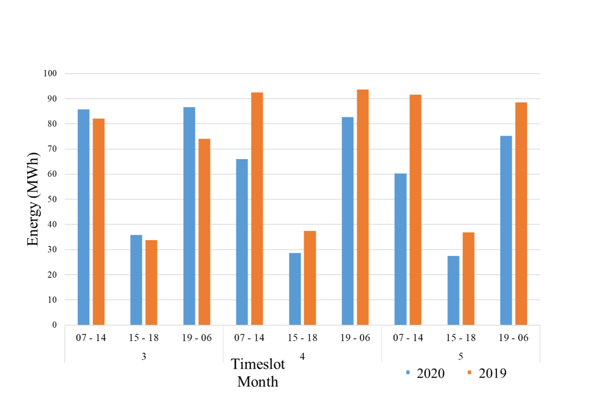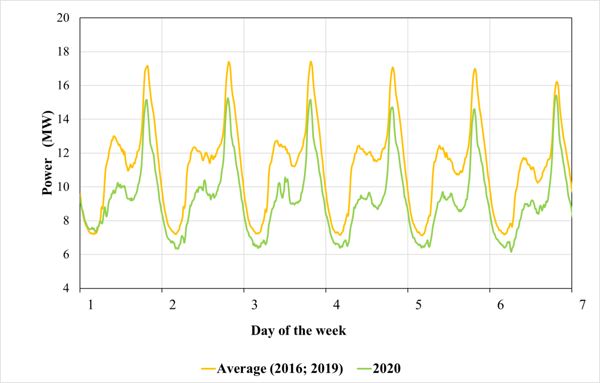A distribution network during a global pandemic
The global pandemic of SARS-CoV-2 required extreme mitigation measures from governments and international organizations; between January and May 2020 billions of people were forced to lockdown for preventing and controlling the virus diffusion.
Therefore, public health has been the main target of lockdown that was enforced in many countries, nevertheless it has a dramatic impact on many industrial sectors as well as on energy consumption. According to the report of the Italian transmission system operator, in March and April decreasing rates were 10 % and 17 %, respectively.
Terni distribution network, which is one of the pilot sites of SOFIE project, was also affected; notably, a domestic consumption increase was replaced by more relevant decrease of industrial processes and commercial activities absorptions. Terni distribution network supplies electricity to about 55,000 domestic customers. The whole consumption from domestic users increased on average by 5 % in March and by 10 % in April in comparison with the last 6 years (as shown in Figure 1). Moreover, notable changes have been found on customer habits; more than 25,000 domestic users increased their consumptions in April 2020 as well as more than 30 % of them have consumed the maximum amount of energy in the same period of the year.
Figure 1. Aggregated consumption of domestic customers
With respect to the not domestic customers, more than 500 big energy consumers were analysed, and it has been observed that about 75 % of the customers reduced their consumption in comparison to April 2020, notably, about 28 % cut in half the absorptions. In addition, many consumers reduced their consumption even in May, despite the Italian lockdown was softened; in particular, 20 % of customers cut in half the consumption in comparison to May 2019 (as shown in Figure 2).
Figure 2. Energy consumption in 2019 and 2020 during working days of an office building
The overall effect of this change affected the flows withdrawn from the Transmission System Operator; namely, the peak absorbed power was on average reduced by 15 % as well as the minimum absorbed power decreased on average by 18 % (as shown in Figure 3).
Figure 3. Power profile at a Transmission/Distribution connection point
The modification of the primary power flows and of the customers habits was very fast, carrying on a rapid changing of the consumption profile patterns. However, it is worth pointing out that the rapid transition to new scenarios, such as a pandemic, could be efficiently managed in the near future by using emerging technologies, like Demand Response campaigns, forecasting techniques based on the machine learning, new contracts managed by the blockchain technique.


